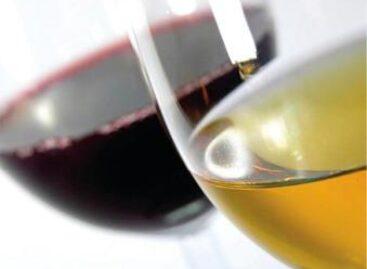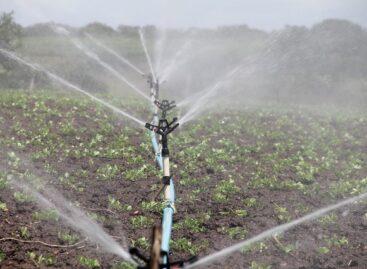A watershed year in viticulture: this is how winemakers are fighting the drought
The lack of precipitation is now critical for vineyards in the post-flowering stage: where there is no rain, producers can expect severe crop losses and capital destruction.
 The year 2025 has proven to be extremely droughty so far, which is now leaving its mark not only on arable crops and horticultural crops, but also increasingly on vineyards. According to experts, although grapes are traditionally more drought-tolerant, they are particularly sensitive to water shortages in the period after flowering, when the berries are growing.
The year 2025 has proven to be extremely droughty so far, which is now leaving its mark not only on arable crops and horticultural crops, but also increasingly on vineyards. According to experts, although grapes are traditionally more drought-tolerant, they are particularly sensitive to water shortages in the period after flowering, when the berries are growing.
“The ground is cracking, the grapes can’t take it anymore,” said Zsolt Giczi, head of viticulture at Varga Winery, in response to a question from the Agricultural Sector. The winery’s 150-160 hectares of plantations across the country are struggling with a severe lack of rainfall: 8-10 centimeter cracks have appeared on the parched soil, and even cultivators or mulching are no longer sufficient to retain water. If there is no significant rain in the coming period, irrigation of the new plantings may also be necessary.
Depending on the variety, a significant amount of fruit is still visible on the vines for the time being – the Hárslevelű, for example, has produced abundantly. The problem is that the plants will probably not be able to “grow” the berries, meaning that the quantity will not be expressed in weight. According to the expert, there may be differences of up to 30-50% between the growing areas in the Balaton Uplands. If the drought worsens further, the winery will be forced to protect the vines by limiting the harvest.
Due to the extreme drought, the appearance of fungal diseases is minimal, but the winery nevertheless carries out all necessary spraying – in 14-day cycles. However, the insect pressure is significant, especially in the Balaton region, where cicadas are becoming an increasingly serious problem. The spread of black rot is also being watched with concern, for which winemakers do not yet widely use the most modern products.
The season started badly with spring frosts: the woody parts of early-ripening varieties were damaged by up to 10-20%. This weakened the plants’ defenses, which the heat only worsened. According to the expert, some vines may become completely extinct within a few years, especially if the stress caused by climate change does not decrease.
Related news
Hungarian champagne crowns the end-of-year holidays!
🎧 Hallgasd a cikket: Lejátszás Szünet Folytatás Leállítás Nyelv: Auto…
Read more >Layers of problems
🎧 Hallgasd a cikket: Lejátszás Szünet Folytatás Leállítás Nyelv: Auto…
Read more >Ministry of Agriculture: the government is giving priority support to the development of irrigation
🎧 Hallgasd a cikket: Lejátszás Szünet Folytatás Leállítás Nyelv: Auto…
Read more >Related news
Christmas shock in commerce: for the first time, we can pay with bank cards in fewer places
🎧 Hallgasd a cikket: Lejátszás Szünet Folytatás Leállítás Nyelv: Auto…
Read more >Hungarian Confectionery Manufacturers Association: trends in 2025 and prospects for 2026
🎧 Hallgasd a cikket: Lejátszás Szünet Folytatás Leállítás Nyelv: Auto…
Read more >Most grocery chains will be open until noon on December 24th
🎧 Hallgasd a cikket: Lejátszás Szünet Folytatás Leállítás Nyelv: Auto…
Read more >






